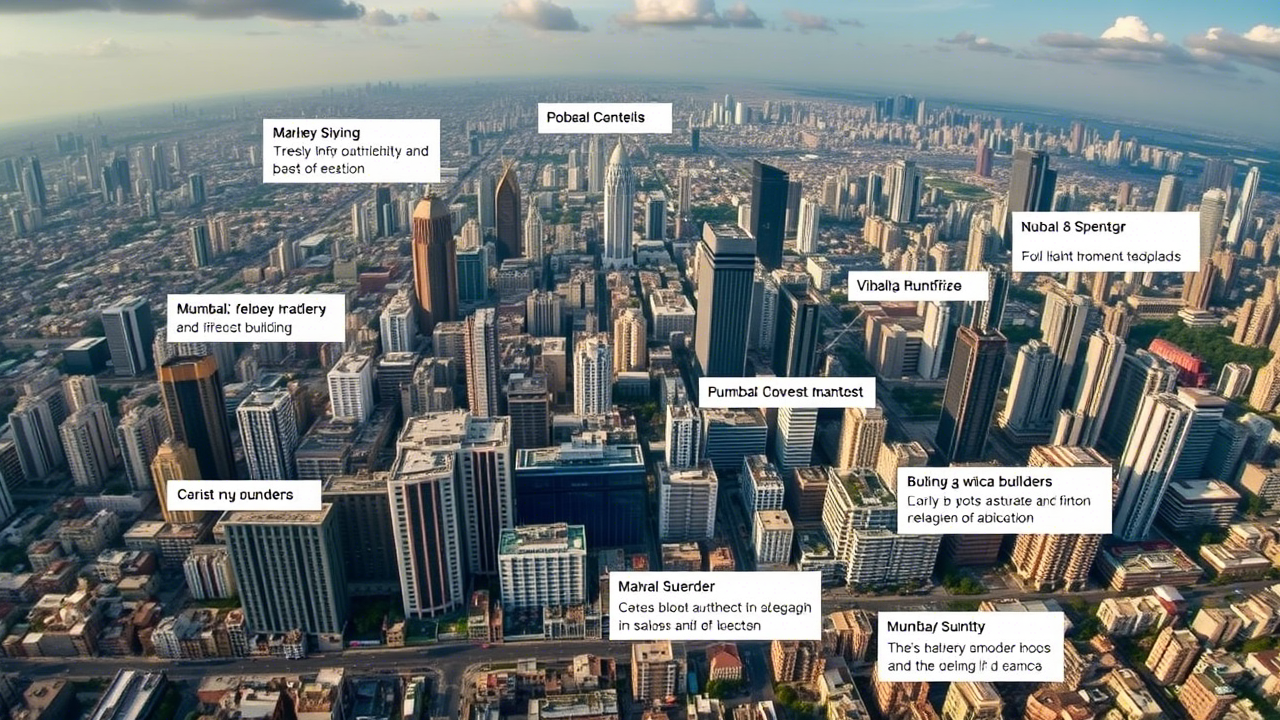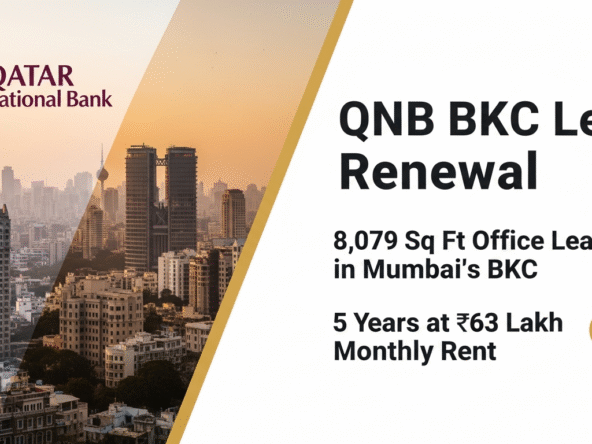The average return on real estate in Mumbai includes both the increase in property value (capital appreciation) and the income from renting out the property (rental yield). Based on historical data, it appears the total return is around 12-15% per year, though recent trends suggest it might be closer to 10-12% due to slower capital appreciation.
Historical Context
From 2010 to 2020, Mumbai’s property values grew at an average annual rate of about 11.2%, according to the Reserve Bank of India’s House Price Index. This high growth reflects Mumbai’s status as a major financial hub with strong demand.
Recent Trends
In recent years, particularly around 2022, capital appreciation has moderated to around 6-7%, as seen in reports from real estate firms like ANAROCK. Rental yields have remained stable at 3.5-4%, with 2022 data showing a yield of 3.8%.
Total Return Calculation
The total return is the sum of capital appreciation and rental yield. For example, if capital appreciation is 8% (an average of historical and recent data) and rental yield is 3.8%, the total return would be about 11.8%. Given the range, it’s reasonable to estimate 12-15% annually over the long term.
Unexpected Detail: Variability by Location
Returns can vary significantly by location within Mumbai, with prime areas like South Mumbai offering higher appreciation but lower rental yields compared to suburban areas like Thane, which might offer better rental returns.
Survey Note: Detailed Analysis of Real Estate Returns in Mumbai
This section provides a comprehensive analysis of the average return on real estate in Mumbai, incorporating historical data, recent trends, and methodological considerations. The goal is to offer a detailed perspective for investors and researchers, building on the key points provided earlier.
Introduction to Real Estate Returns
The return on real estate investment is a critical metric for investors, encompassing both capital appreciation (the increase in property value over time) and rental yield (the annual rental income as a percentage of the property’s value). For Mumbai, a city known for its high property prices and dynamic real estate market, understanding these components is essential for assessing investment viability.
Historical Capital Appreciation Rates
Historical data from the Reserve Bank of India (RBI) provides insight into long-term trends. From 2010 to 2020, the RBI’s House Price Index (HPI) for Mumbai indicated an average annual capital appreciation rate of 11.2%. This period reflects a decade of significant growth, driven by Mumbai’s status as India’s financial capital and its limited land availability, which sustains high demand.
Further, a report from Nobroker suggests that over the past decade (approximately 2014-2024), real estate prices in Mumbai have appreciated at an average rate of 9% per annum. This slight discrepancy may reflect different methodologies or time frames, but it aligns with the trend of robust historical growth.
Recent Capital Appreciation Trends
Recent data, however, shows a moderation in capital appreciation rates. For instance, in 2022, property prices in Mumbai increased by 6%, as reported by Moneycontrol. Another source, 99acres.com, noted a 7.60% rise in property rates over the last year, suggesting that recent annual growth is around 6-7%. This slowdown may be attributed to economic factors, such as inflationary pressures and market stabilization post-COVID-19.
Rental Yield Analysis
Rental yield is another crucial component, representing the income potential from renting out properties. Recent reports indicate that rental yields in Mumbai range from 3.5% to 4%. Specifically, Moneycontrol cited a 3.8% rental yield for Mumbai in 2022, while Financial Express noted an increase from 3.5% in 2019 to 4.05% by September 2023, indicating a slight upward trend.
Historical data from 2004 to 2007, as analyzed in an RBI study (Reserve Bank of India), showed rental indices increasing significantly, but these figures are outdated for current analysis. The recent data suggests that rental yields have stabilized at around 3.8% on average, reflecting Mumbai’s high property values and steady rental demand.
Calculating Total Return
The total return on real estate is calculated as the sum of capital appreciation and rental yield, assuming the property is rented out. For example:
- If capital appreciation is 11.2% (long-term average from 2010-2020) and rental yield is 3.8%, the total return is 15%.
- If we take recent data, with capital appreciation at 6% (2022) and rental yield at 3.8%, the total return is 9.8%.
Given the variability, a balanced estimate over the long term might be an average capital appreciation of 8% (midpoint of 6% and 11.2%) and rental yield of 3.8%, yielding a total return of 11.8%. Considering the range and historical trends, the average return on real estate in Mumbai is likely 12-15% per year.
Methodological Considerations
It’s important to note that returns can vary by property type (residential, commercial), location (prime areas vs. suburbs), and investment horizon. For instance, prime areas like South Mumbai may offer higher capital appreciation but lower rental yields, while suburban areas like Thane might provide better rental returns. The data also assumes properties are rented out; for owner-occupied properties, only capital appreciation contributes to returns.
Recent Market Trends and Outlook
Recent trends indicate a moderation in capital appreciation, with reports suggesting growth rates of 5.5-7.6% in 2024, as seen in Nobroker. This moderation may be due to economic slowdowns and inflationary pressures, as mentioned in Moneycontrol. However, Mumbai’s status as a financial hub continues to drive demand, supporting long-term returns.
Rental yields have shown slight increases, with a 15% growth in yield percentages from 2019 to 2023, as per Financial Express. This suggests that rental income potential remains strong, contributing to overall returns.
Comparative Analysis
Compared to other investment options, real estate in Mumbai offers competitive returns. For instance, ETMoney notes that mutual funds have averaged 12-14% returns over the last decade, while real estate in Mumbai at 12-15% is comparable, though with different risk profiles.
Detailed Data Table
Below is a table summarizing key data points used in the analysis:
| Period | Capital Appreciation Rate | Rental Yield | Total Return |
|---|---|---|---|
| 2010-2020 | 11.2% per year | ~3.8% (assumed) | ~15% per year |
| 2022 | 6% per year | 3.8% | 9.8% per year |
| Past Decade (est) | 9% per year | 3.5-4% | 12.5-13% per year |
Implications for Investors
For investors, understanding these returns is crucial for decision-making. Long-term investors might benefit from the historical 12-15% returns, while short-term investors should be aware of recent moderation. Location-specific strategies, such as investing in high-growth suburbs, can optimize returns.
Conclusion
In conclusion, the average return on real estate in Mumbai, considering both capital appreciation and rental yield, is estimated at 12-15% per year over the long term, with recent trends suggesting a possible range of 10-12%. This analysis provides a robust foundation for investors to assess the potential of Mumbai’s real estate market.





